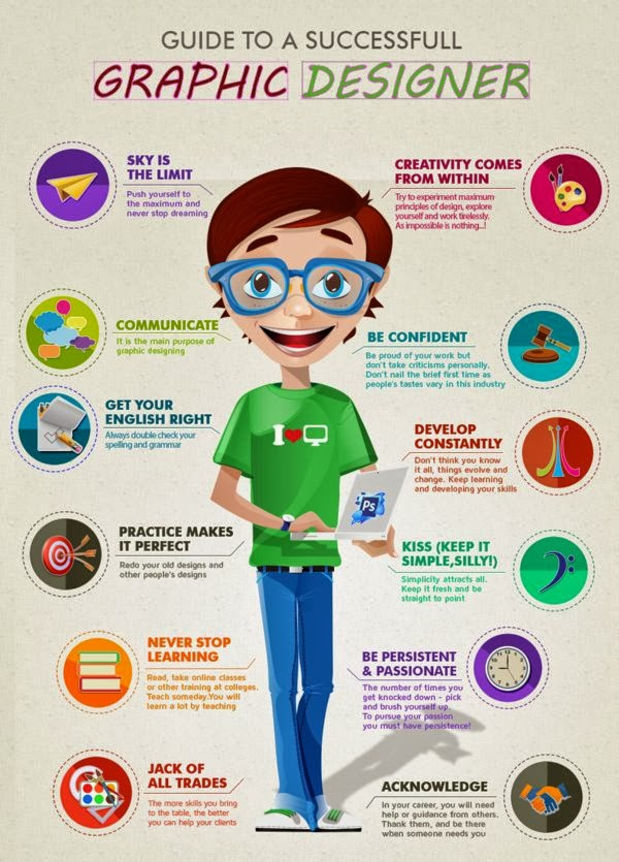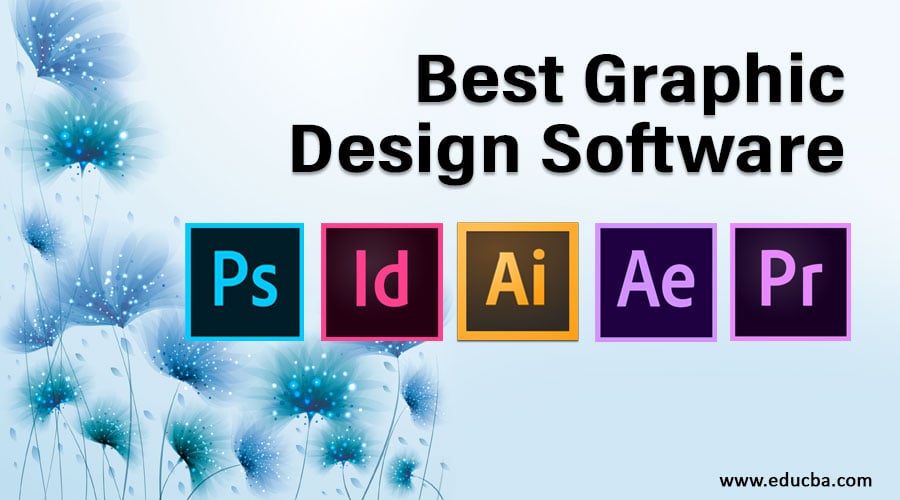Why graphic design matters
 Graphic design is important for several reasons:
Graphic design is important for several reasons:- Communication: Graphic design helps convey information, ideas, and messages effectively and efficiently. Through visual elements such as layout, typography, color, and images, graphic design helps communicate complex concepts in a visually appealing and accessible manner.
- Branding and identity: Graphic design plays a critical role in creating and maintaining a brand’s identity. A well-designed logo, website, packaging, and other visual elements help establish a brand’s personality, values, and unique identity in the minds of consumers, leading to recognition, recall, and brand loyalty.
- User experience (UX): In the digital age, user experience is paramount. Graphic design is crucial in creating visually pleasing and intuitive interfaces for websites, apps, and other digital platforms. Good UX design enhances user satisfaction, engagement, and loyalty, leading to improved customer experiences.
- Marketing and advertising: Graphic design is a key component of marketing and advertising campaigns. Eye-catching graphics and visuals are used in advertisements, social media posts, banners, and other promotional materials to grab attention, evoke emotions, and persuade consumers to take action.
- Aesthetics and creativity: Graphic design is a form of artistic expression that adds aesthetic appeal to various mediums, including print, digital, and social media. It allows designers to showcase their creativity, artistic skills, and unique perspectives, creating visually captivating and memorable experiences for viewers.
- Professionalism and credibility: Well-designed visuals instill a sense of professionalism and credibility. Whether it’s a business card, website, or presentation, high-quality graphic design can help establish trust, reliability, and legitimacy in the eyes of clients, customers, and stakeholders.
- Accessibility and inclusivity: Graphic design also plays a role in creating inclusive and accessible designs that are usable by individuals with disabilities. Design elements such as color contrast, font size, and alternative text for images can make digital and print materials more accessible and inclusive to a wider audience.
In summary, graphic design is important because it enhances communication, establishes brand identity, improves user experience, supports marketing efforts, stimulates creativity, conveys professionalism, and promotes accessibility and inclusivity. It is a fundamental aspect of visual communication that is present in various aspects of our daily lives, from print materials to digital media, and contributes to the overall aesthetic appeal, functionality, and effectiveness of visual communication.
Will graphic designers be needed in the future
Based on current trends and the role of graphic design in various industries, it is likely that graphic designers will continue to be in demand in the future. Here are some reasons why:
- Evolving technology: Graphic design is closely tied to technology, and as technology continues to advance, new opportunities for graphic designers may arise. For example, with the rise of augmented reality (AR), virtual reality (VR), and other immersive technologies, graphic designers may be needed to create visual assets for these platforms.
- Digital media and marketing: As digital media and marketing continue to play a crucial role in businesses and organizations, graphic designers are needed to create visual content for websites, social media platforms, digital advertisements, and other digital channels. With the increasing reliance on online presence, graphic designers who can create engaging visual content for digital platforms are likely to be in demand.
- Branding and identity design: Companies and organizations place a high value on their brand identity, and graphic designers play a critical role in creating and maintaining brand aesthetics. Branding and identity design, including logo design, packaging design, and other visual elements, are important for creating a consistent and recognizable brand image, and skilled graphic designers are essential for this purpose.
- Print and traditional media: While digital media has become dominant in many areas, print and traditional media still play a significant role in various industries, such as print publications, signage, environmental graphics, and packaging. Graphic designers with expertise in print design and traditional media may continue to be in demand for these applications.
- Creative problem solving: Graphic designers are known for their creative problem-solving skills, which can be applied in various fields beyond traditional graphic design. For example, graphic designers can work in fields such as user experience (UX) design, information design, and data visualization, where their visual communication skills can be utilized to create effective and user-friendly designs.
However, it’s important to note that the field of graphic design, like any other profession, may evolve and change over time. As new technologies, tools, and design trends emerge, graphic designers may need to adapt and acquire new skills to remain relevant in the industry. Additionally, the demand for graphic designers may vary depending on the economic, technological, and cultural factors of a given time and location. Therefore, it’s always a good idea for professionals in any field, including graphic design, to stay updated with industry trends and continue to develop their skills to meet the changing demands of the job market.
Will graphic design be automated
 It is likely that some aspects of graphic design may be automated to varying degrees in the future, while other aspects may still require human creativity and expertise.
It is likely that some aspects of graphic design may be automated to varying degrees in the future, while other aspects may still require human creativity and expertise.With advancements in artificial intelligence and machine learning, we are seeing automation being applied to various tasks in the creative field, including graphic design. For example, automated tools can generate simple graphics, such as logos and social media posts, based on predefined templates or input parameters. They can also assist with repetitive tasks, such as image editing, resizing, and color correction.
However, graphic design is a multidimensional field that involves not only technical skills but also creativity, aesthetics, and communication. It requires a deep understanding of design principles, typography, color theory, and user experience. Graphic designers also need to interpret and convey complex messages visually, taking into consideration the target audience, brand identity, and project goals.
Human creativity, critical thinking, and problem-solving skills are still highly valuable in graphic design. The ability to come up with unique and innovative design solutions, adapt to different clients and projects, and understand the nuances of visual communication are not easily replicable by automation.
Moreover, graphic design often involves collaboration with clients, stakeholders, and other team members, which requires human communication and interpersonal skills. Building relationships, understanding client requirements, and incorporating feedback are important aspects of the graphic design process that may be challenging for automation to replicate.
In conclusion, while automation may impact certain aspects of graphic design, it is unlikely to fully replace human creativity, aesthetics, and communication skills in the foreseeable future. Human graphic designers are likely to continue playing a vital role in the field, bringing their unique perspectives and expertise to create visually compelling and effective design solutions.
Who are graphic designers and what do they do
 Graphic designers are professionals who create visual content for various media, such as print, digital, and social media platforms. They use their creativity, design skills, and software expertise to communicate messages effectively and aesthetically through visuals.
Graphic designers are professionals who create visual content for various media, such as print, digital, and social media platforms. They use their creativity, design skills, and software expertise to communicate messages effectively and aesthetically through visuals.The primary responsibility of a graphic designer is to develop visual solutions that meet the specific needs of their clients or employers. This may involve creating logos, brochures, flyers, posters, banners, websites, social media graphics, packaging, and other marketing materials. Graphic designers work in various industries, including advertising, marketing, media, entertainment, fashion, and technology.
The tasks of a graphic designer typically include:
- Client consultation: Graphic designers work with clients to understand their needs, goals, and target audience. They may discuss design concepts, timelines, and budgets.
- Concept development: Graphic designers brainstorm and develop design concepts based on the client’s brief and requirements. They may create sketches or mockups to illustrate their ideas.
- Visual design: Graphic designers use design software to create visual elements such as layouts, typography, color schemes, and images. They may incorporate illustrations, photographs, and other visual elements to create a cohesive and visually appealing design.
- Branding: Graphic designers may create or update brand identities, including logos, color palettes, and visual guidelines, to ensure consistency across all marketing materials.
- Production: Graphic designers prepare final design files for print or digital distribution. They may also collaborate with printers or other vendors to ensure the quality and accuracy of the final product.
- Digital design: Graphic designers may create designs for websites, social media, and other digital platforms, including user interfaces, interactive elements, and animations.
- Keeping up with design trends: Graphic designers stay updated with the latest design trends, software, and industry best practices to continuously improve their skills and deliver innovative designs.
Graphic designers play a critical role in creating visually appealing and effective communication materials that help convey messages, enhance brand image, and engage audiences.
What graphic design software is best
 I can provide information on popular graphic design software that are widely used and have different strengths based on the specific needs of the designer. Some of the most commonly used graphic design software are:
I can provide information on popular graphic design software that are widely used and have different strengths based on the specific needs of the designer. Some of the most commonly used graphic design software are:- Adobe Photoshop: Adobe Photoshop is a powerful and versatile raster-based image editing software that is widely used for photo editing, digital painting, and graphic design. It is known for its extensive tools and features, including layers, filters, and image manipulation capabilities.
- Adobe Illustrator: Adobe Illustrator is a vector-based software that is used for creating illustrations, logos, icons, and other graphic design elements. It is known for its precision and scalability, making it suitable for creating graphics that need to be resized without losing quality.
- Adobe InDesign: Adobe InDesign is a desktop publishing software that is widely used for creating print and digital media such as brochures, magazines, flyers, and eBooks. It offers powerful layout and typography tools that are designed for creating visually appealing and professional-looking documents.
- Canva: Canva is a web-based graphic design tool that is known for its user-friendly interface and accessibility. It offers a wide range of templates and design elements that are easy to customize, making it suitable for beginners or those who need to create graphics quickly.
- Sketch: Sketch is a vector-based design software that is popular among UI/UX designers. It is known for its intuitive interface and powerful features for designing user interfaces, wireframes, and prototypes for websites and mobile apps.
- GIMP: GIMP (GNU Image Manipulation Program) is a free and open-source raster-based image editing software that offers similar functionalities to Adobe Photoshop. It is suitable for those who are looking for a free alternative to Photoshop with a wide range of tools and features.
Ultimately, the best graphic design software depends on the specific needs and preferences of the designer, as well as the type of project they are working on. It’s important to consider factors such as budget, skill level, and the specific requirements of the project when choosing the right graphic design software for your needs.
Graphic designer fees for work
 Graphic design fees can vary greatly depending on factors such as the experience and skill level of the designer, the complexity of the project, the location, and the specific services being provided.
Graphic design fees can vary greatly depending on factors such as the experience and skill level of the designer, the complexity of the project, the location, and the specific services being provided.
Here are some common ways that graphic designers may charge for their work:
- Hourly Rate: Many graphic designers charge an hourly rate for their services. Hourly rates can vary significantly depending on the designer’s experience and location, with more experienced designers generally charging higher rates. Hourly rates may also vary depending on the type of work being done, such as logo design, website design, or print design.
- Project-Based Fee: Graphic designers may charge a flat fee for a specific project. This can be negotiated based on the scope of work, the complexity of the project, and the expected time commitment. Project-based fees may be used for specific deliverables, such as designing a logo, creating a brochure, or designing a website.
- Retainer Fee: Some graphic designers may charge a retainer fee, which is a recurring monthly or quarterly fee for ongoing design work, such as regular updates to a website or ongoing social media graphics.
- Value-Based Pricing: In some cases, graphic designers may charge based on the value they bring to a project. For example, if a designer is working on a project that is expected to generate significant revenue for a client, they may charge a higher fee based on the anticipated value of the project to the client’s business.
It’s important to note that graphic design fees can vary widely depending on the specific circumstances and the negotiation between the designer and the client. It’s recommended to have clear communication with your chosen graphic designer and establish a mutually agreed-upon fee structure before beginning any work.
Graphic Design Fee: Common Queries Answered
What Factors Influence Graphic Design Fees?
Understanding the variables influencing graphic design fees is crucial. Factors such as complexity, project scope, and the designer’s experience contribute to the overall cost. By grasping these elements, clients can navigate the pricing landscape with confidence.
Paragraph: Graphic design fees are influenced by a multitude of factors. The complexity of a project, its scope, and the designer’s experience all play pivotal roles in determining the overall cost. Clients empowered with this knowledge can navigate the pricing landscape confidently, ensuring a harmonious collaboration with their chosen designer.
How Can Clients Negotiate Graphic Design Fees?
Negotiating graphic design fees is a common practice. Clients can explore flexibility in pricing by discussing project scopes, timelines, and budget constraints with designers. A collaborative approach to negotiations often results in a win-win scenario for both parties.
Paragraph: Negotiating graphic design fees is not only acceptable but often encouraged. Clients can explore flexibility in pricing by engaging in open discussions about project scopes, timelines, and budget constraints with designers. This collaborative approach to negotiations fosters a win-win scenario, allowing both parties to reach an agreement that aligns with their respective needs and priorities.
Is There a Standard Industry Range for Graphic Design Fees?
While graphic design fees vary, there is a standard industry range influenced by factors like geographic location and designer expertise. Clients can research prevailing rates in their region and industry to ensure they receive fair and competitive quotes for their design projects.
Paragraph: While graphic design fees exhibit variability, a standard industry range exists, shaped by factors such as geographic location and designer expertise. Clients keen on ensuring fair and competitive quotes for their design projects should conduct research on prevailing rates in their region and industry. This knowledge serves as a valuable benchmark for navigating the pricing landscape.
What Role Does Quality Play in Graphic Design Fees?
Quality is a defining factor in graphic design fees. Experienced designers often command higher rates due to their expertise and ability to deliver exceptional quality. Clients seeking top-notch designs should view the graphic design fee as an investment in the overall success and impact of their visual content.
Paragraph: Quality stands as a cornerstone in graphic design fees. Experienced designers, recognized for their expertise, often command higher rates by virtue of their ability to consistently deliver exceptional quality. Clients aspiring for top-notch designs should perceive the graphic design fee as a strategic investment in the overall success and impact of their visual content.
Are There Cost-Efficient Alternatives to Standard Graphic Design Fees?
Exploring cost-efficient alternatives is a prudent approach for clients mindful of budget constraints. Platforms offering pre-designed templates, freelance marketplaces, and emerging designers looking to build portfolios can provide viable options that align with specific project requirements.
Paragraph: Clients mindful of budget constraints can explore cost-efficient alternatives to standard graphic design fees. Platforms offering pre-designed templates, freelance marketplaces, and emerging designers seeking to build portfolios present viable options that align with specific project requirements. Embracing these alternatives allows clients to strike a balance between quality and affordability.
How Can Graphic Designers Justify Their Fees to Clients?
Effective communication is key for graphic designers to justify their fees to clients. Designers should articulate their creative process, showcase past successes, and emphasize the value they bring to the table. This transparency instills confidence in clients, reinforcing the worth of the graphic design fee.
Paragraph: Graphic designers aiming to justify their fees to clients must prioritize effective communication. Articulating the creative process, showcasing past successes, and emphasizing the value they bring to the table are crucial components of this transparent communication. Such efforts instill confidence in clients, reinforcing the worth and significance of the graphic design fee.
Conclusion
In the dynamic world of graphic design, the fee structure serves as a compass, guiding both clients and designers toward successful collaborations. By unraveling the layers of pricing intricacies, this guide empowers individuals to navigate the graphic design fee landscape with confidence, ensuring a harmonious balance between creativity and financial considerations.

